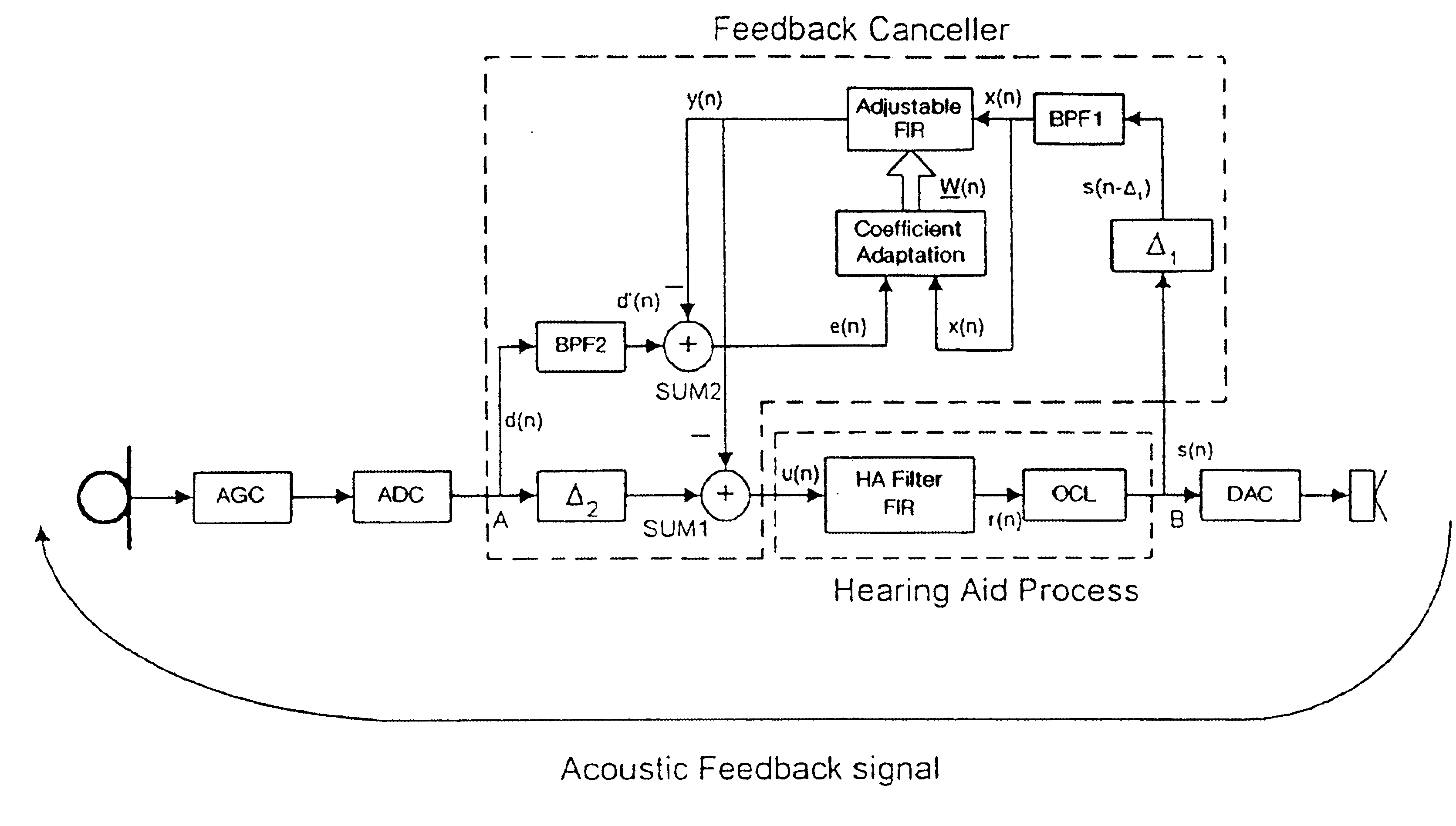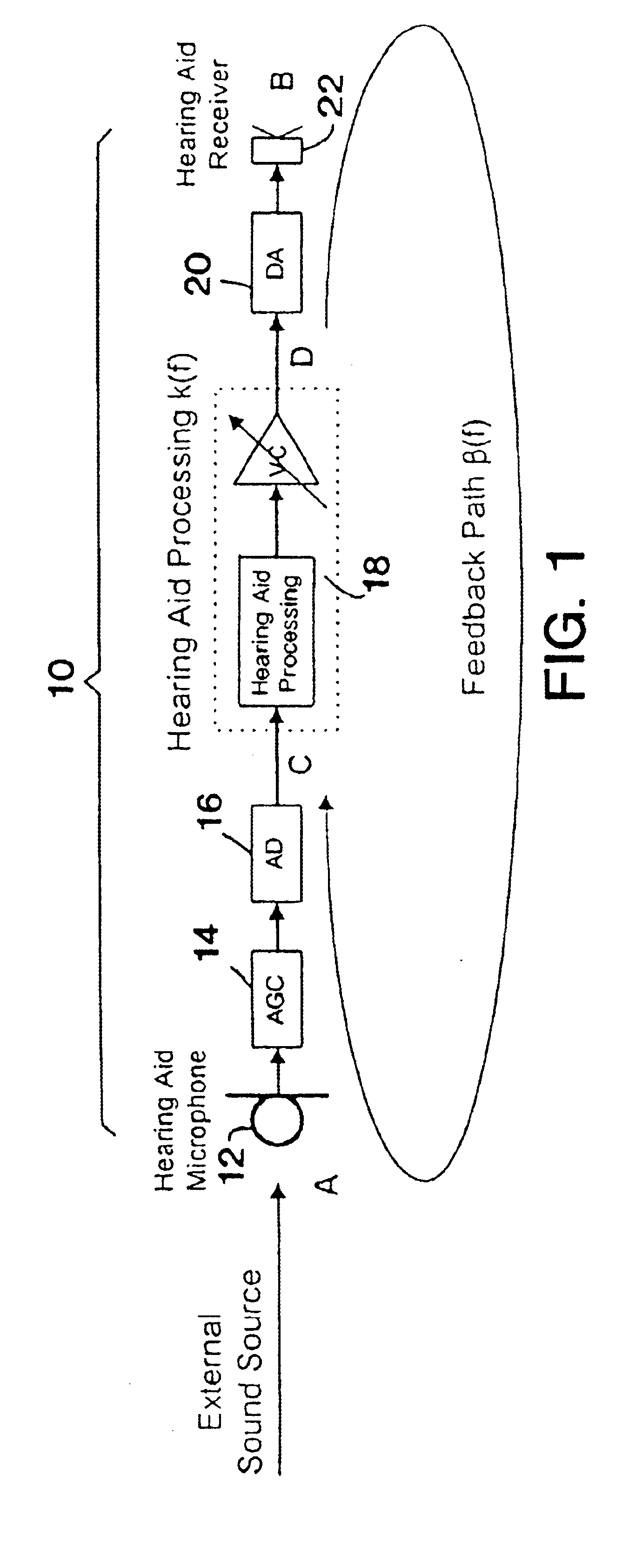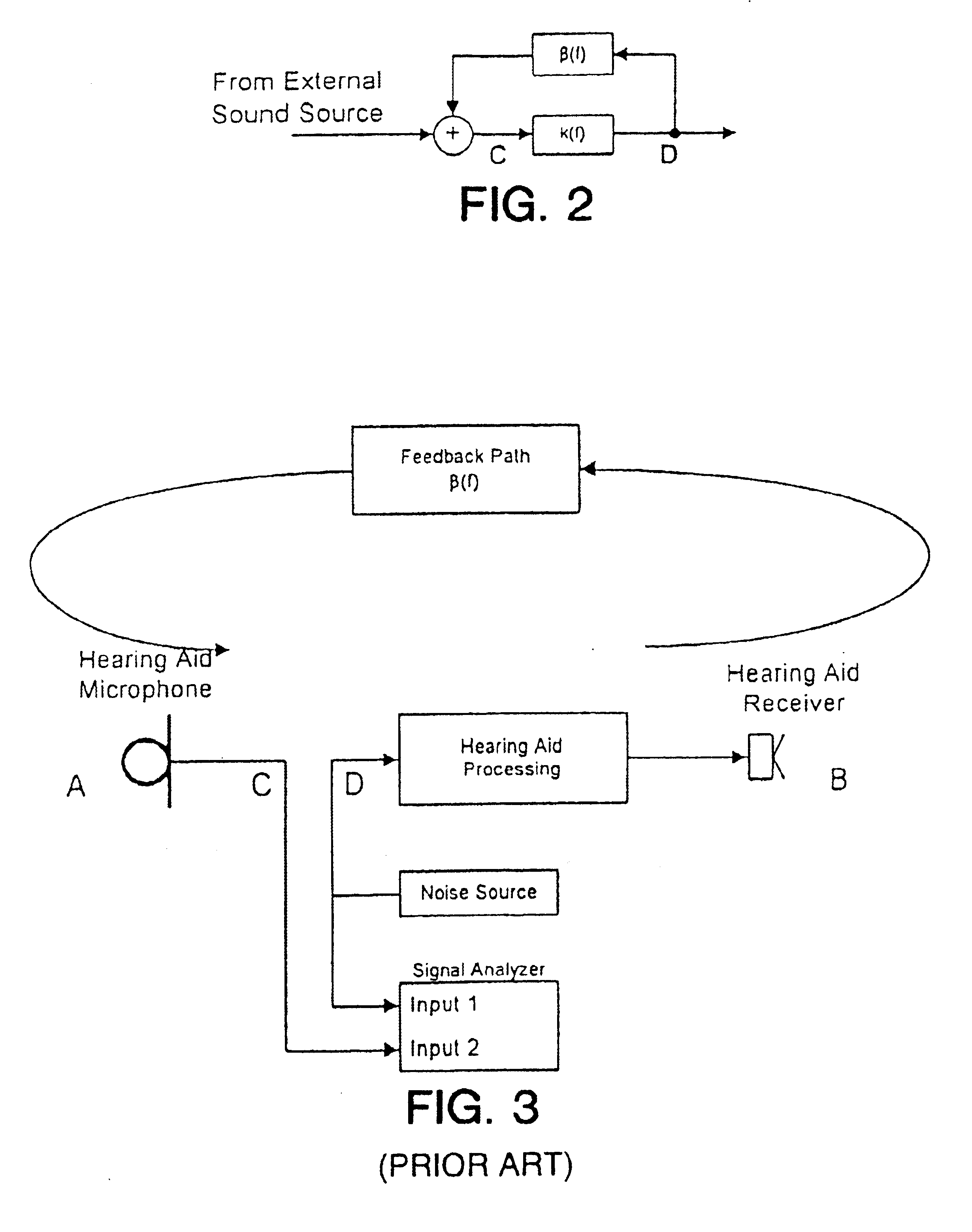Band-limited adaptive feedback canceller for hearing aids
a feedback canceller and adaptive technology, applied in the field of audio amplification, can solve the problems of common and difficult suppression of acoustic feedback in the hearing aid, and reducing the effectiveness of the hearing aid, so as to achieve minimal signal distortion, reduce the bandwidth of adaptation, and achieve high effective results.
- Summary
- Abstract
- Description
- Claims
- Application Information
AI Technical Summary
Benefits of technology
Problems solved by technology
Method used
Image
Examples
Embodiment Construction
In the following description, for purposes of explanation and not limitation, specific details are set forth in order to provide a thorough understanding of the present invention. However, it will be apparent to one skilled in the art that the present invention may be practiced in other embodiments that depart from these specific details. In other instances, detailed descriptions of well-known methods and devices are omitted so as to not obscure the description of the present invention with unnecessary detail.
FIG. 1 is a functional block diagram of a hearing aid 10 in an ear of a hearing aid user. The hearing aid 10 comprises a microphone 12, microphone pre-amplifier circuitry 14, analog-to-digital converter 16, signal processing circuitry 18, digital-to-analog converter 20 and receiver 22. The signal processing circuitry 18 has a transfer function from point C to point D of K(f). The feedback path from point D to point C includes digital-to-analog converter 20, hearing aid receiver...
PUM
 Login to View More
Login to View More Abstract
Description
Claims
Application Information
 Login to View More
Login to View More - R&D
- Intellectual Property
- Life Sciences
- Materials
- Tech Scout
- Unparalleled Data Quality
- Higher Quality Content
- 60% Fewer Hallucinations
Browse by: Latest US Patents, China's latest patents, Technical Efficacy Thesaurus, Application Domain, Technology Topic, Popular Technical Reports.
© 2025 PatSnap. All rights reserved.Legal|Privacy policy|Modern Slavery Act Transparency Statement|Sitemap|About US| Contact US: help@patsnap.com



